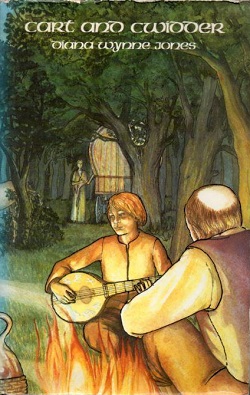Plot summary
Osfameron Tanamoril (Moril) Clennenson is a travelling musician, who travels with his father, Clennen, his mother, Lenina, and his elder siblings, Dagner and Brid, through Dalemark, a country torn by civil war between the South and the North. They travel around, playing music, taking passengers and messages, and spreading news throughout the country.
When Clennen (the father and main performer) is murdered by the Earl of South Dales, who suspects him of being a spy for the North, Lenina (who is high-born and gave up the chance of being a Lady when she married Clennen) takes her three children and their passenger Kialan, the fugitive son of a Northern earl, back to her home town of Markind in South Dalemark. Within the same day as her husband's death, Lenina is married to her former fiancé the Lord of Markind, guided by the belief that this is the only way to counter the bad luck caused by Clennen's murder.
Dagner, Brid, and Moril encounter their father's murderer among the wedding guests in Markind and together with Kialan they flee the town and try to reach the North, while continuing to perform for a living, but without Clennen and Lenina, they find this difficult to do. The oldest son, Dagner, tries to continue their father's work as a Northern spy, but is arrested for treason against the Earl of South Dales. Brid, Moril, and Kialan are forced to flee, believing that Dagner will be hanged.
Before he died, Clennen left his youngest son Moril a magical cwidder (a common musical instrument in Dalemark similar to a lute with some properties of an acoustic guitar). It is rumoured to have been owned by Moril's ancestor and namesake Osfameron, who was both a minstrel and a famous magician, featuring in many of the legends of Dalemark. Throughout their travels from the South to the North, Moril discovers that he has the power to use the magic of his newly inherited instrument.
As they travel, they become embroiled in the civil war. As the Southerners are about to attack the North, Moril uses his magical cwidder to make the mountains 'walk' and close Flennpass, the only mountain pass between the North and the South, just as his ancestor, the famed Osfameron, did in so many of the songs Moril's father had sung nearly every day. The walking mountains crush the attacking Southern army, killing the evil Earl of South Dales, Clennen's murderer, and saving the North. After the battle, however, Moril is wracked with guilt, as he caused the deaths of hundreds of men, and mainly because he was angry that his beloved horse, Olob, had been shot.
In the end, when all safely reach Hannart, the earldom of Kialan's father, they are joined by Dagner who has been released from jail after the death of the Earl of South Dales and travelled to North Dalemark with another travelling Singer, Hestefan. Moril decides that he should travel with Hestefan and learn how to be a proper Singer. Hestefan accepts, and they leave to continue travelling through Dalemark.
